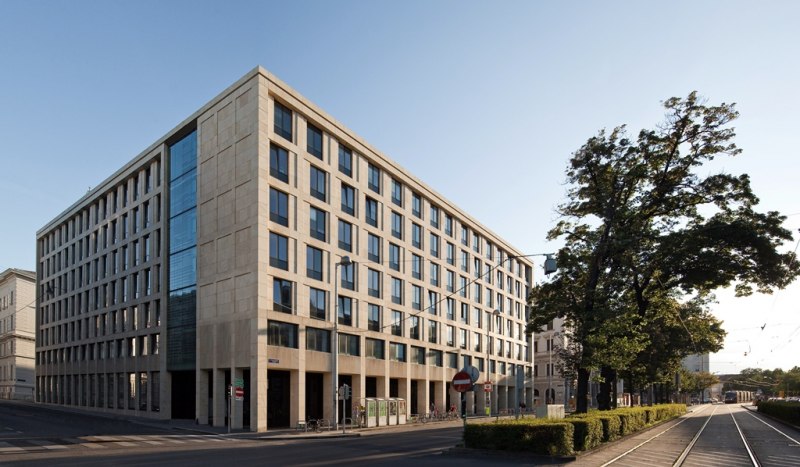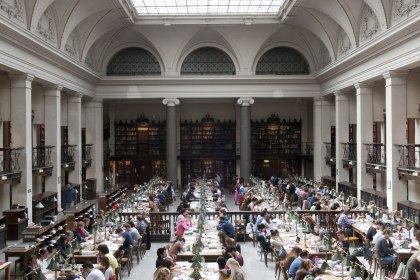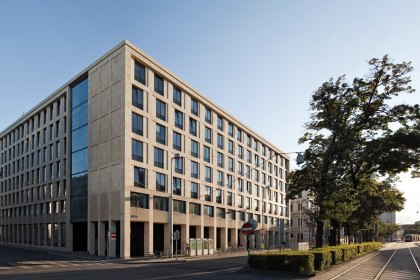NIG | The New Institute Building
Military background of the construction site
When construction at the former parade grounds (Josefstädter Glacis) began, the plot at Universitätsstraße, Ebendorferstraße, Liebiggasse and Rathausstraße was reserved for the headquarters building. From 1871 to 1874 it was constructed based on plans by Carl Wilhelm Christian Ritter von Doderer and housed administration offices, the area’s command offices, the office of the artillery supervisor, the military appeals court and the apartment of the chief of general staff of the corps of the imperial-royal army. On November 12, 1918, the communist “Red Guard” occupied the building and the army established the army inspectorate as well as the brigade commands I and II with the Viennese city commander.
During the National Socialist period, the city command and the military district command XVII of the German Wehrmacht were also located here from 1938 onwards, as well as the stronghold command of Vienna and from 1938 to 1945 the court of the Wehrmacht command Vienna. With this, the location as a site of courts and command offices was an important hub – both structurally and geographically – for National Socialist military jurisprudence. Here, Major Karl Biedermann was arrested and sentenced to death for the preparation of resistance activities and publicly hanged shortly afterwards by the SS at am Spitz in Vienna’s Floridsdorf district.
The corps command building had only slightly been damaged during the war, but it was nevertheless demolished at the end of the 1950s.
Background as a planned new library building with a university forum
It seems that the desire for the ideally located property may have played a part in its demolition: The university won the bid for the property against its competitors, the Austrian Trade Union Federation (ÖGB) and the Army Office, and planned to erect the long planned central university library building here. This was meant to alleviate the severe lack of space in the book magazines as well as the space problems of the different institutes in the university building. In 1950 an architecture contest for the library building at Universitätsstraße 7 was started, with a concept by the architects Alfred Dreier (1920-1987) and Otto Nobis (1914-2000) winning. The entrance to the new building was planned at Liebiggasse, opposite the entrance to the old institute building. Liebiggasse would have become a pedestrian zone – a small “university forum” was supposed to develop behind the university. However, the planned start of construction was delayed for years, until finally the Philosophical Faculty, which had just as many problems with space as the library, was able to claim the construction site for itself in August 1955. From 1956-1962 the New Institute Building was erected here instead of the library building. For the University Library, some now partially empty rooms in the main building were renovated from 1964 to 1969, among them the grand library staircase (staircase XII), which was used as a magazine.
The New Institute Building (NIG), Universitätsstraße 7 – the first university building of the Second Republic
In 1962 the so-called “Neues Institutsgebäude” (“New Institute Building”, NIG) was opened. It was built by the same architects who had won the contest for the library building. The NIG was the first large university building to be constructed in Austria since the end of the Second World War. On nine floors with a total of 21,500m2 the 16 (mainly) humanities institutes of the large Philosophical Faculty were grouped around a central atrium and offered a significantly improved teaching situation for the quickly increasing number of students as well as scientists with 14 lecture halls – the three largest are located in the basement: lecture hall I has 333m2 for 396 people, and lecture halls II and III have 120m2 for 120 people each. The Minister of Trade and Reconstruction at the time, Fritz Bock, designed the building’s façade; he also advocated a quick realization of the construction.
Canteen and Paternoster
Two central facilities are further also located in the building: the cellar housed the newly established Computation Center of the University of Vienna, and on the top floor was the university canteen, where one also could use the terrace. A “paternoster”, an open circulating elevator – the only one university-wide – offered an easy means of transportation for the hungry patrons to reach the canteen on the 7th floor.
The paternoster’s familiar sounds of wood creaking and chains grinding while it made its rounds was gone from the New Institute Building in July 2007, when it was dismantled and replaced with a normal elevator. Parts of the paternoster can today be seen in the Technical Museum, at the Technical University of Vienna and at the German Elevator Museum. While one used to be able to get on the elevator at any point and thus actually reached one’s destination faster, one now has to wait patiently for the elevator to return.
Use and renovation
Through the dynamic development of the former Philosophical Faculty and the establishment of new university locations, the NIG was heavily impacted by relocations, leaving clear marks. Particularly after the Second University Center (UZA II) was opened in Althanstraße in 1995 and the University Campus was established in the old General Hospital in 1997/98, the now available NIG became the center of the then Faculty of Foundational and Integrative Science. Necessary adaptations were not affordable, and so the building stood empty for a time until the Bundesimmobiliengesellschaft (Federal Property Association, BIG) in March 1998 agreed to pay the 1.8 million euros needed for the adaptation, which was finished in 2003. Architect Laudis Ortner created the plans for this renovation. At the moment, the NIG houses six institutes (Cultural and Social Anthropology, Educational Sciences, Geography and Area Studies, Philosophy, Political Science, Economic and Educational Psychology and Evaluation)
Renovation 2003 | Art intervention by Eva Schlegel
In the course of the renovations, the until then open balconies were fitted with glass walls and the BIG integrated a permanent art installation by Eva Schlegel (born 1960): text on the glass inside and outside the building. A temporary art intervention in the framework of BIG Art on the façade by the same artist could also be seen during the renovation.
-

NIG Vorgängerbau, k.k. General-Kommando-Gebäude, Universitätsstraße 7, Arch. Wilhelm Doderer
-

NIG Vorgängerbau: Wehrmachtskommandatur und -gericht in der Universitätsstraße 7, 1938–1945
-

1958 Grundsteinlegung des NIG | Neues Institutsgebäude
-
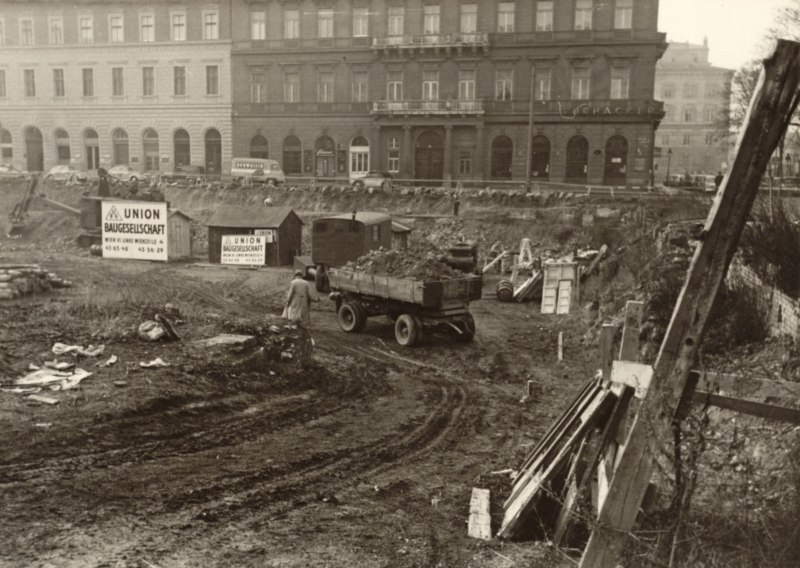
1958 Baustelle des NIG | Neues Institutsgebäude
-
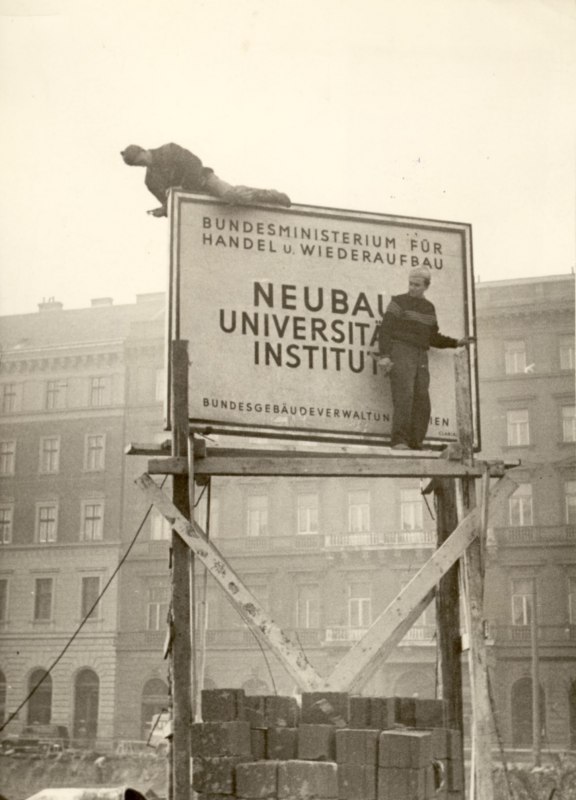
1958 Baustelle des NIG | Neues Institutsgebäude
-
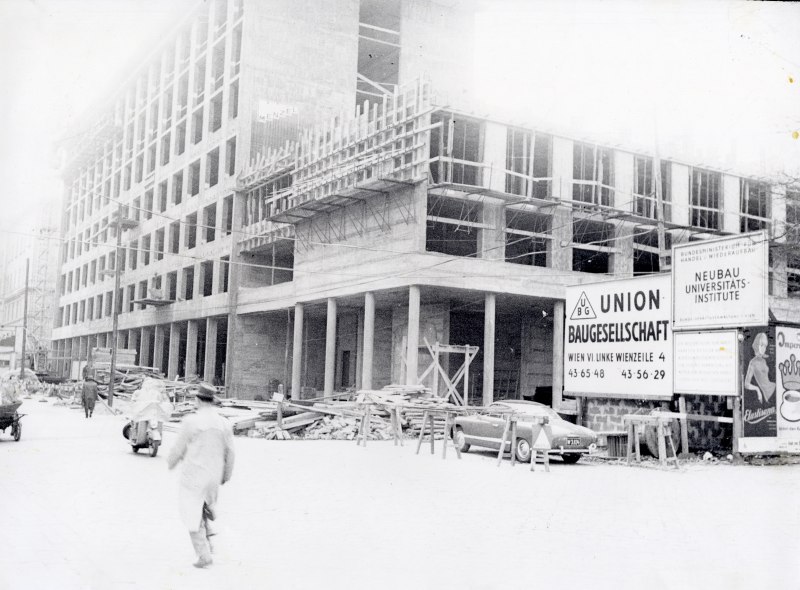
1959 Baustelle des NIG | Neues Institutsgebäude
-

1959 Baustelle des NIG | Neues Institutsgebäude
-

1962 Fertigstellung Neubau des NIG | Neues Institutsgebäude
-
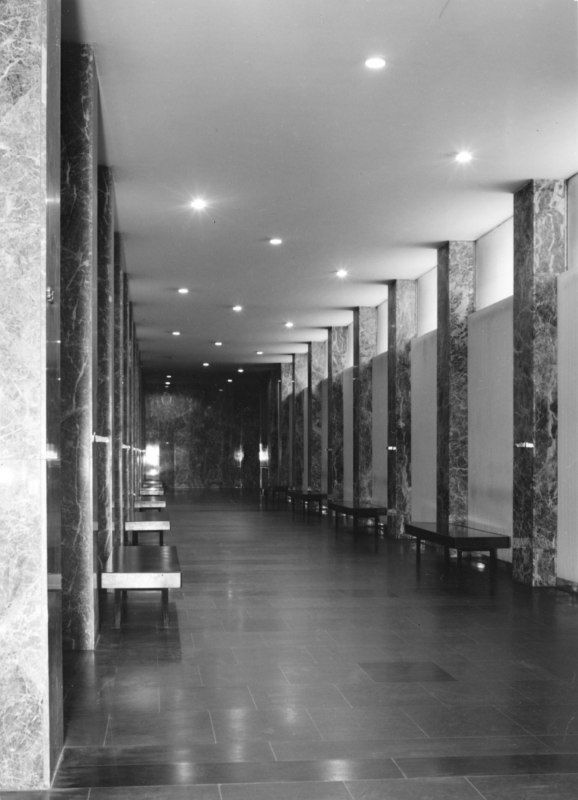
1962 NIG | Neues Institutsgebäude, Gang

